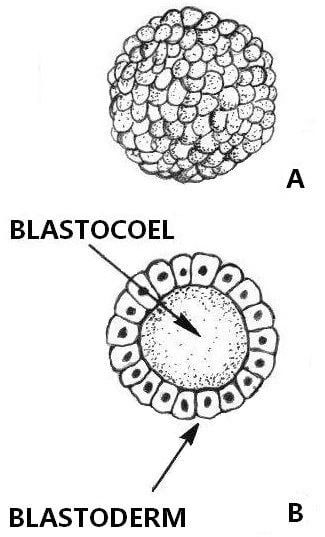 | ||
The blastoderm is a term for cell layers found in blastulas.
In amniotes
A blastoderm is the layer of cells formed at one pole of macrolecithal eggs such as the yolky egg of birds. The yolk prevents the division from taking place through the egg, resulting in meroblastic cleavage during the many cleavage divisions. At the animal pole (containing less yolk than the vegetal pole), the zygote divides and subdivides, forming the blastoderm, which gradually spreads around the yolk and forms the embryo. The blastoderm is composed of two layers, the epiblast and the hypoblast, which enclose the fluid-filled blastocoel cavity.
Koller's sickle, which is a local thickening of epiblast involved in the formation of the primitive streak through which gastrulation occurs, separates sheets of cells from the posterior end of the blastoderm from the underlying hypoderm and area opaca endoderm. This separation is crucial in the formation of the primitive streak.
